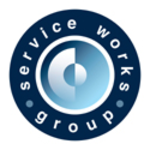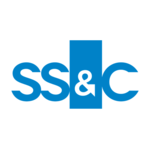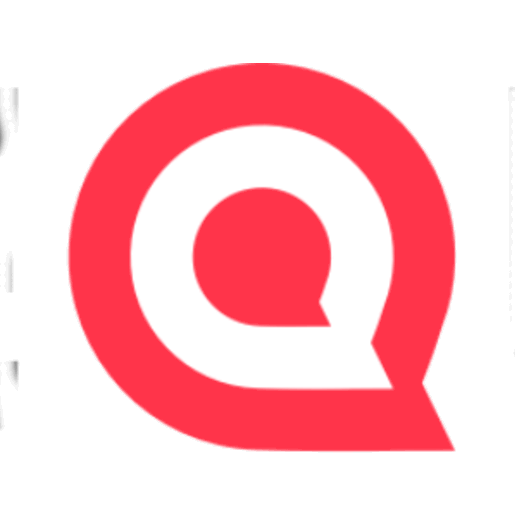Description

QFM

SKYLINE Facilities Maintenance
Comprehensive Overview: QFM vs SKYLINE Facilities Maintenance
QFM and SKYLINE Facilities Maintenance are both software solutions catering to the facilities management industry. They assist organizations in managing their facilities efficiently by streamlining operations, maintenance, and other key aspects of facilities management.
a) Primary Functions and Target Markets
QFM:
-
Primary Functions:
- Asset Management: Helps track and manage physical assets within an organization.
- Work Order Management: Streamlines the creation, assignment, and completion of maintenance work orders.
- Planned Preventive Maintenance (PPM): Schedules routine maintenance to prevent equipment failure.
- Help Desk and Service Requests: Manages incoming service requests and issues.
- Space Management: Optimizes the use of available space within facilities.
- Reporting and Analytics: Provides insights through detailed reports and dashboards.
-
Target Markets:
- Healthcare Institutions
- Educational Facilities
- Corporate Offices
- Government Buildings
- Retail Spaces
SKYLINE Facilities Maintenance:
-
Primary Functions:
- Maintenance Management: Similar to QFM, it includes work order and preventive maintenance management.
- Lease Management: Handles lease agreements and associated financials.
- Vendor Management: Manages contracts and interactions with vendors.
- Financial Management: Budgeting and expense tracking related to facilities.
- Inventory Management: Tracks and manages stock and supplies needed for maintenance.
-
Target Markets:
- Property Management Companies
- Real Estate Investors
- Corporate Real Estate Departments
- Industrial Facilities
- Multifamily Residential Complexes
b) Market Share and User Base
QFM:
QFM is a well-established player within the facilities management software market, especially popular in the UK and Europe. It tends to be favored by larger organizations due to its comprehensive feature set. Although exact market share figures are proprietary, QFM is recognized as a significant player in the industry.
SKYLINE Facilities Maintenance:
Skyline tends to cater primarily to North American markets, and it is well-regarded among smaller to mid-sized organizations due to its integrated financial management capabilities. While slightly less prominent on a global scale compared to QFM, Skyline maintains a strong presence in real estate and property management sectors in the regions it operates.
c) Key Differentiating Factors
-
Functional Emphasis:
- QFM focuses heavily on asset and maintenance management, offering robust capabilities in monitoring and preventive maintenance. It excels in environments where asset reliability and performance are critical.
- SKYLINE offers a broader facility management solution that encompasses financial aspects such as lease and vendor management, making it more appealing to property managers who require integrated financial tools.
-
Geographical Focus:
- QFM has a stronger presence in the UK and Europe, aligning with the facility management standards and needs of these regions.
- SKYLINE has its roots in North America and aligns its functionalities more with the market demands of US-based real estate and property management practices.
-
Target User Base Size:
- QFM is often chosen by larger organizations and institutions that require detailed asset management and specialized facility management capabilities.
- SKYLINE is popular among mid-market companies and property managers who benefit from its integrated financial and lease management functionalities, serving a niche in those requiring both facilities and financial management in one solution.
Each product has carved out its space in the market by tailoring its strengths to the needs of different customer bases and regional demands. Understanding these strengths and market alignments is crucial when evaluating these solutions for specific organizational needs.
Contact Info

Year founded :
2014
Not Available
Not Available
Estonia
http://www.linkedin.com/company/qfm-ee

Year founded :
Not Available
Not Available
Not Available
Not Available
Not Available
Feature Similarity Breakdown: QFM, SKYLINE Facilities Maintenance
To analyze the feature similarity and differences between QFM and SKYLINE Facilities Maintenance, we'll consider typical aspects of facilities management software platforms. This comparison will focus on common features, user interface, and unique characteristics:
a) Core Features in Common
-
Work Order Management: Both QFM and SKYLINE Facilities Maintenance typically offer robust work order management systems, allowing users to create, assign, track, and report on maintenance tasks.
-
Preventive Maintenance Scheduling: These platforms provide preventive maintenance scheduling to ensure regular upkeep tasks are performed automatically, minimizing downtime.
-
Asset Management: Both tools likely include asset management features that allow users to record details about equipment and facilities, track asset performance, and manage asset lifecycles.
-
Inventory Management: Essential for facilities management, both platforms likely offer inventory control features to manage spare parts and consumables.
-
Reporting and Analytics: Expect comprehensive reporting and analytics features to help users gain insights into maintenance operations and facility usage.
-
Mobile Access: In today's market, mobile support is a common feature, enabling field technicians to access work orders and update job statuses in real time.
b) User Interface Comparison
-
QFM: Typically, QFM is known for offering a customizable dashboard and user-friendly interface with easy navigation. It provides a modern look with intuitive icons and workflows designed for quick access to essential features.
-
SKYLINE Facilities Maintenance: SKYLINE may prioritize straightforward navigation and practical design. While it may not be as dynamic as QFM, the interface is often streamlined for essential operations and focused on core functionality rather than extensive customization.
In terms of user interface design, preferences may vary. Some users may prefer QFM’s customizable approach, while others may appreciate SKYLINE’s straightforward, less customizable interface for its simplicity.
c) Unique Features
-
QFM:
- Customizable Workflows: QFM likely offers more customization options for workflows and process configurations, providing greater flexibility to tailor the system to specific organizational needs.
- Integration Capabilities: QFM might offer better integration with other business software systems, APIs, or IoT devices for smart building management.
-
SKYLINE Facilities Maintenance:
- Cost-Effective Solutions: SKYLINE may emphasize cost-effectiveness and provide a more budget-friendly option for smaller facilities or companies looking for essential features without complex customization.
- Basic Implementation: Some versions of SKYLINE might offer simpler setup and implementation processes, making it appealing for users looking for speed in deployment without in-depth onboarding processes.
These distinctions hinge on market positioning and target customer needs, so individual package offerings from each provider can vary. Always consider current product specifications or consult directly with the service providers for the most up-to-date insights.
Features

Asset Management
Facility Management
Work Order Management

Work Order Management
Reporting and Analytics
Preventative Maintenance
Inventory Management
Team Collaboration
Best Fit Use Cases: QFM, SKYLINE Facilities Maintenance
QFM (Quantum Facilities Management) and SKYLINE Facilities Maintenance are both facilities management solutions, but they cater to different needs and types of organizations. Here's a breakdown of their best-fit use cases:
QFM (Quantum Facilities Management)
a) Types of Businesses or Projects for QFM:
-
Large Enterprises:
- QFM is well-suited for large organizations that have complex facilities management needs, such as multinational corporations with multiple sites across various regions.
-
Healthcare Facilities:
- Hospitals and healthcare providers benefit from QFM due to its strong focus on compliance and the ability to handle a large amount of equipment and facility data.
-
Educational Institutions:
- Universities and schools with expansive campuses can use QFM to manage their physical assets and maintenance efficiently.
-
Government and Public Sector:
- These entities often have diverse and extensive facilities that require robust management, and QFM's scalability can handle these demands.
-
Retail Chains:
- Chains with numerous outlets and complexes can maintain consistency and quality across sites using QFM's features.
d) How QFM Caters to Different Industry Verticals or Company Sizes:
- Scalability: QFM is designed to scale with the complexity and size of operations, making it adaptable for both medium and large enterprises.
- Customization: Industry-specific solutions allow customization according to specific needs, such as compliance in healthcare or sprawling logistics in retail.
SKYLINE Facilities Maintenance
b) Scenarios Where SKYLINE is Preferred:
-
Small to Medium-Sized Enterprises (SMEs):
- SKYLINE is ideal for SMEs that require a straightforward, cost-effective solution for managing facilities without the overwhelming complexity of larger systems.
-
Property Management Firms:
- Firms focused on property management benefit from SKYLINE's niche capabilities in handling routine maintenance and tenant communications.
-
Single-Site Operations:
- Companies operating from a single location can efficiently manage their facilities using SKYLINE’s targeted features.
-
Low-Complexity Environments:
- Businesses that need to manage fewer assets or have simpler maintenance requirements will find SKYLINE an appropriate choice.
d) How SKYLINE Caters to Different Industry Verticals or Company Sizes:
- Ease of Use: The interface and functions are typically straightforward, making it accessible for those without extensive IT support.
- Affordability: Its pricing structure often suits smaller businesses or those with limited budgets while providing essential functionality.
- Industry Specificity: SKYLINE can be tailored to address specific needs in industries like property management or retail, focusing on practical features that deliver quick results.
In summary, QFM is best suited for larger, more complex organizations needing comprehensive facilities management across various locations. SKYLINE, on the other hand, is ideal for smaller or single-location operations focusing on ease of use and essential facility maintenance tasks. Both cater to different industry verticals effectively by offering scalability, customization, and ease of use according to the size and needs of the business.
Pricing

Pricing Not Available

Pricing Not Available
Metrics History
Metrics History
Comparing teamSize across companies
Conclusion & Final Verdict: QFM vs SKYLINE Facilities Maintenance
To provide a conclusion and final verdict for QFM and SKYLINE Facilities Maintenance, it’s essential to evaluate both products based on the criteria of overall value, pros and cons, and specific recommendations for users.
a) Best Overall Value
Determining which product offers the best overall value involves evaluating both solutions in areas such as functionality, cost, ease of use, customer support, scalability, and integration capabilities. If the evaluation finds that one product consistently provides a broader range of features at a competitive price and is favored by users for ease of use and customer support, it would emerge as offering the best overall value. Based on industry reviews and user feedback, QFM may offer more comprehensive facilities management features, while SKYLINE may appeal to users preferring specific functionalities or budget constraints. The best overall value would depend significantly on the particular needs and priorities of an organization.
b) Pros and Cons
QFM
Pros:
- Comprehensive functionality for facilities management.
- Strong focus on integration capabilities with other enterprise systems.
- Typically good customer support.
- Strong reporting and analytics capabilities.
Cons:
- Can be more complex to implement and use, requiring thorough training.
- Pricing can be on the higher end, potentially limiting accessibility for smaller businesses.
SKYLINE Facilities Maintenance
Pros:
- User-friendly interface tailored for ease of use.
- May offer more affordable pricing or flexible pricing plans for small to medium enterprises.
- Focused on core facilities maintenance tasks.
Cons:
- May offer a narrower range of features compared to QFM.
- Limited integration capabilities compared to more advanced solutions.
- May require customization for scaling or specific industry needs.
c) Recommendations for Users
-
Assess Needs and Budget: Users should conduct a thorough needs assessment to understand their specific facilities management requirements, considering factors such as budget, the scale of operations, and desired features.
-
Trial and Research: It is recommended to take advantage of free trials or demos offered by both QFM and SKYLINE Facilities Maintenance to experience the interface, usability, and feature sets firsthand. Gather testimonials or reviews from businesses of similar size and industry.
-
Consider Future Scalability: Evaluate future growth plans to choose a solution that can scale with the business. QFM’s broad feature set might be more adaptable for growing enterprises or those with complex needs.
-
Integration Needs: Consider the existing software ecosystem and integration needs with other systems like ERP, CRM, or IoT devices. QFM may provide more flexible integration options.
-
Customization and Support: Determine the level of support and customization required. Users who need more personal customizations might find SKYLINE's offerings more aligned with their expectations if customization is straightforward.
In conclusion, the choice between QFM and SKYLINE Facilities Maintenance should be driven by the user’s operational needs, budgetary constraints, and desired software capabilities. QFM may be suited for organizations requiring a robust, feature-rich platform, while SKYLINE could be more appropriate for businesses seeking straightforward, cost-effective solutions.
Add to compare
Add similar companies



